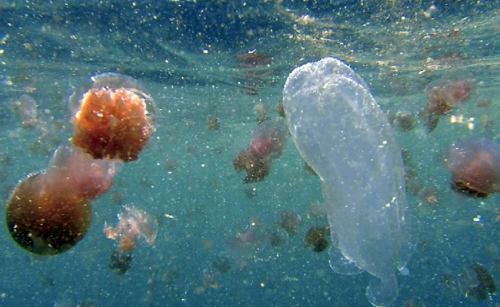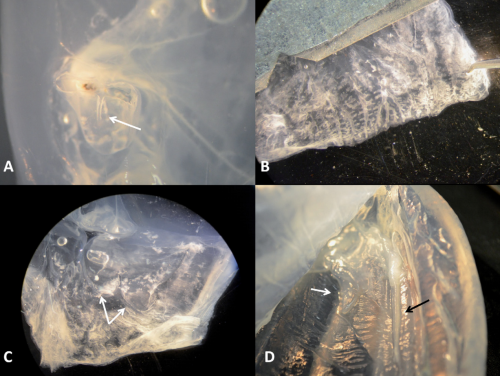biovisual: New Species of Venomous Jellies Discovered in Australia By Megan Gannon, News Editor,&nbs
biovisual: New Species of Venomous Jellies Discovered in Australia By Megan Gannon, News Editor, Live Science | August 13, 2014 Two new species of jellyfish (Keesingia gigas and Malo bella) have been discovered off the coast of Western Australia. One is surprisingly large. The other is tiny. Both are extremely venomous. These two newfound creatures are thought to pack painful stings that cause Irukandji syndrome, a constellation of symptoms that includes lower back pain, vomiting, difficulty breathing, cramps and spasms. Though Irukandji syndrome usually isn’t life threatening, two people who were stung in the Great Barrier Reef in 2002 died from severe Irukandji-related hypertension. Research scientist Lisa-ann Gershwin, who is director of the Australian Marine Stinger Advisory Services, described the new box jellyfish, or cubozoans, last month in the Records of the Western Australian Museum [available as a PDF]. Gershwin said that in all of the photos the jellyfish did not appear to have tentacles and that the specimen was also captured without them. “Jellyfish always have tentacles … that’s how they catch their food,” she said. “The tentacles are where they concentrate their stinging cells. … Some of the people working with it through the years actually got stung by it and experienced rather distressing Irukandji syndrome.” IMAGES: [1] An example of the Keesingia gigas jellyfish. Photograph: John Totterdell/MIRG Australia. Via The Guardian [2] Keesingia gigas in bloom of sea tomatoes, Crambione mastigophora. Image credit: John Totterdell / MIRG Australia.. Via Sci-News [3] That’s not a plastic bag. That’s a newly described species of box jellyfish, Keesingia gigas. Image Credit: Lisa-ann Gershwin -- source link
#new species#box jellyfish#cubozoan#keesingia gigas#marine biology#irukandji syndrome#australia


